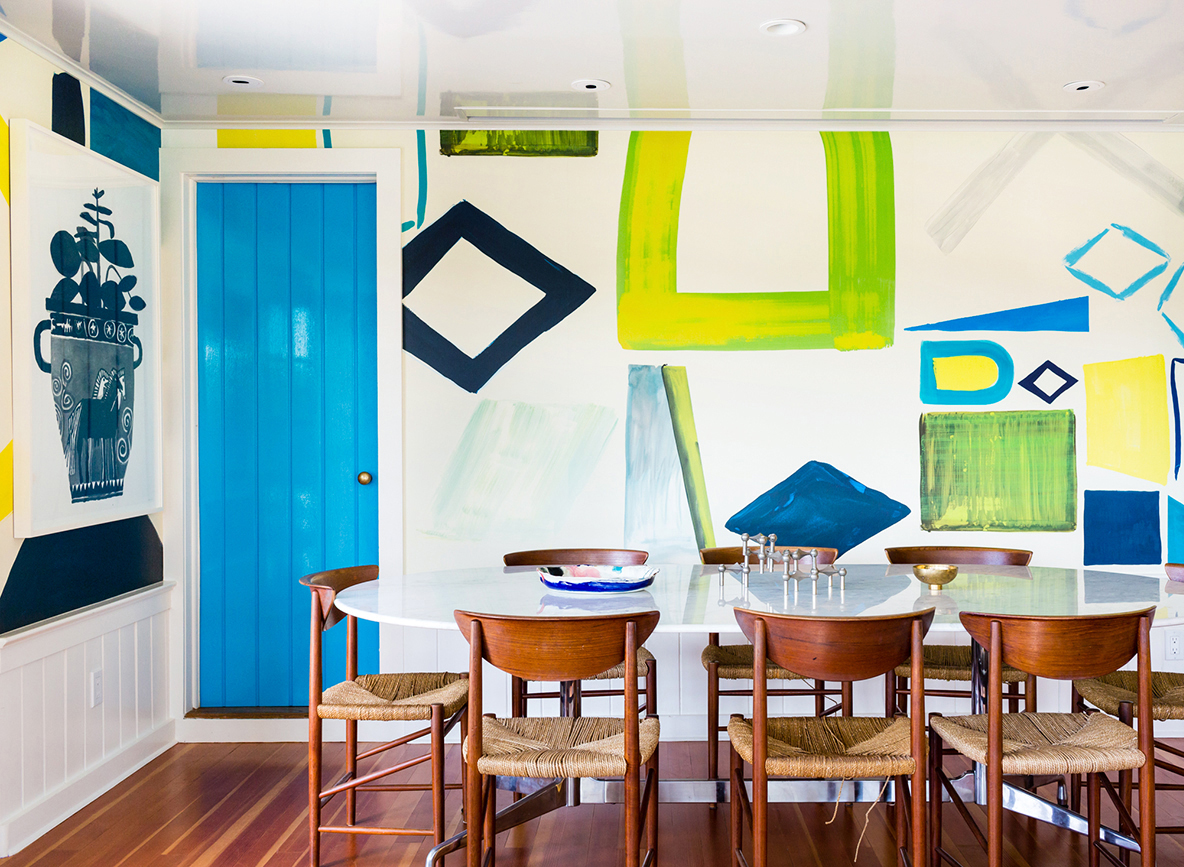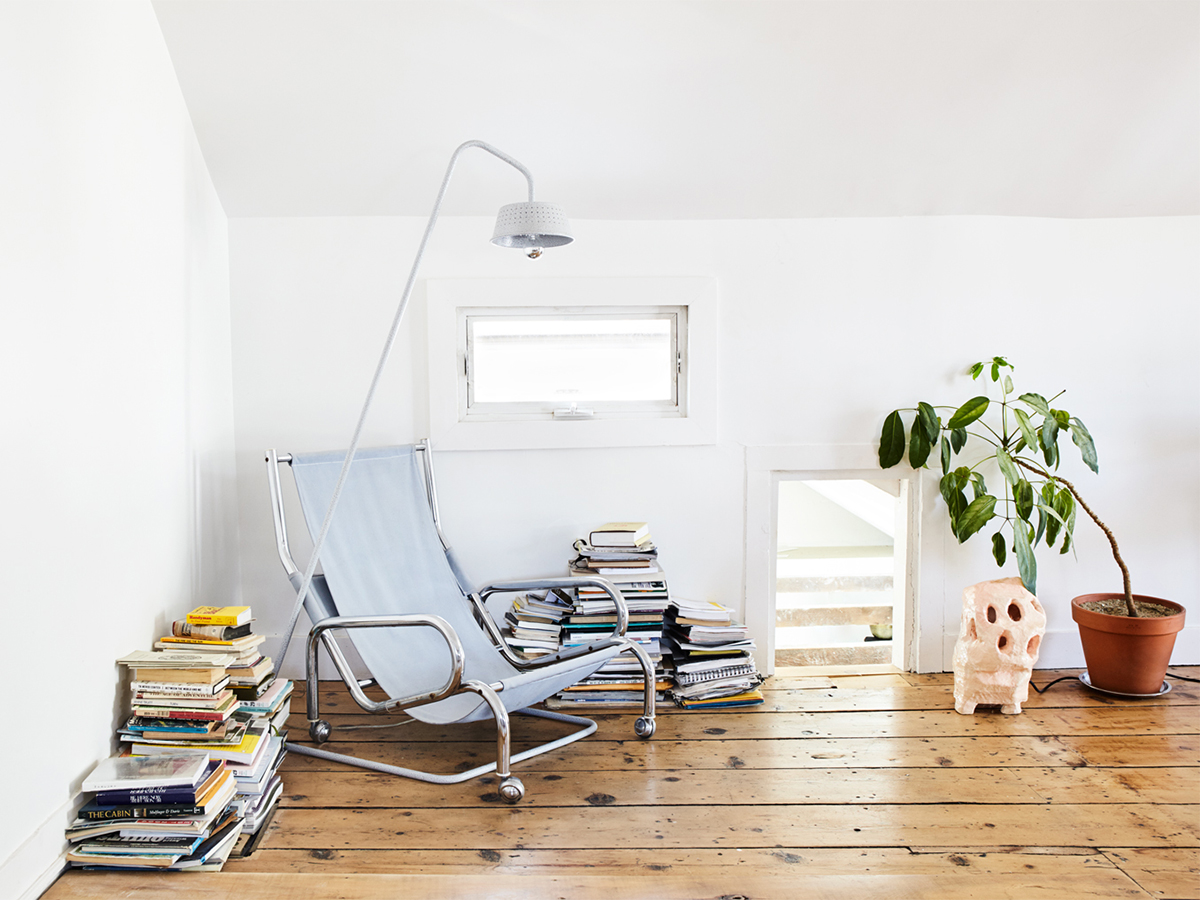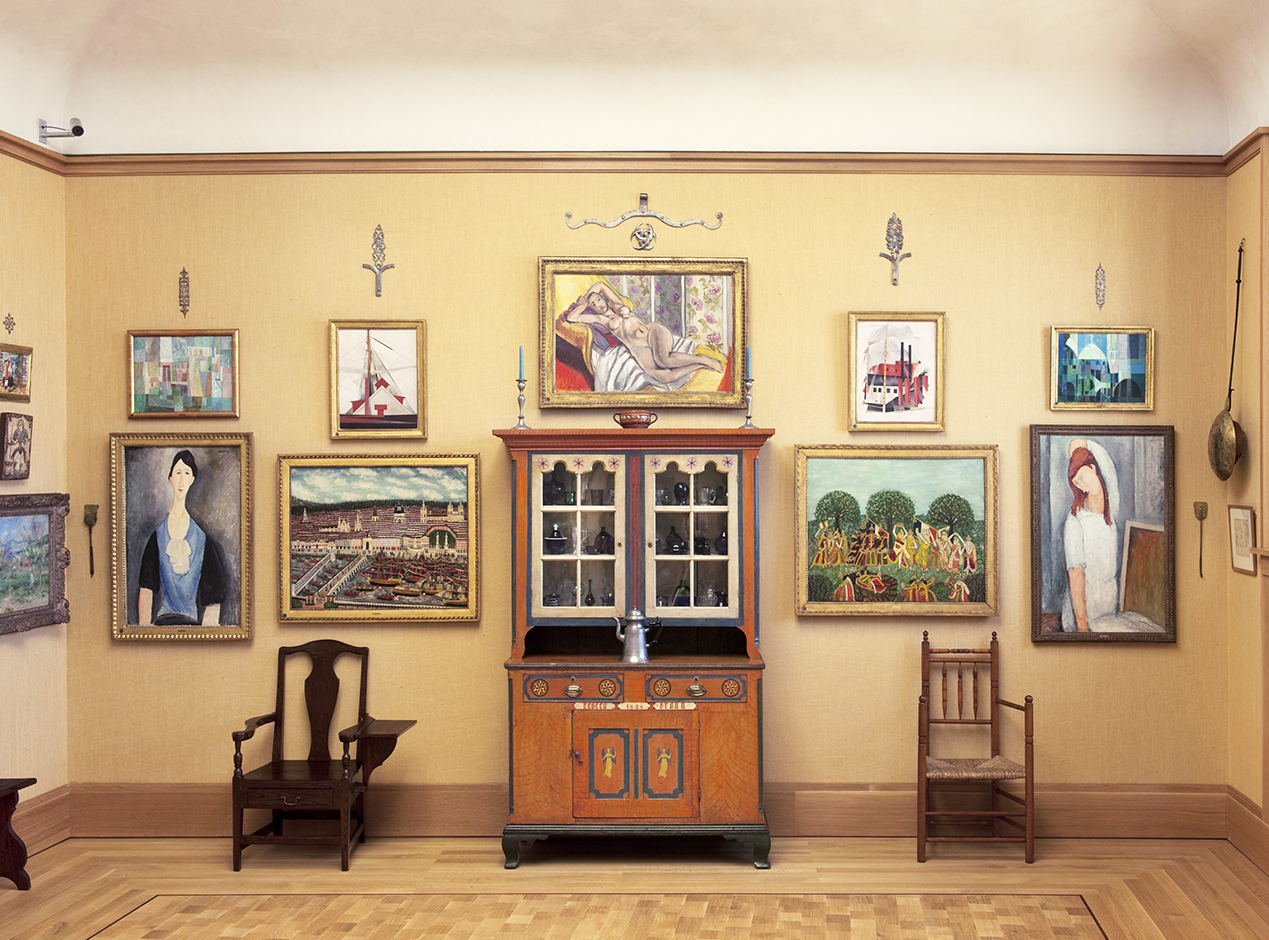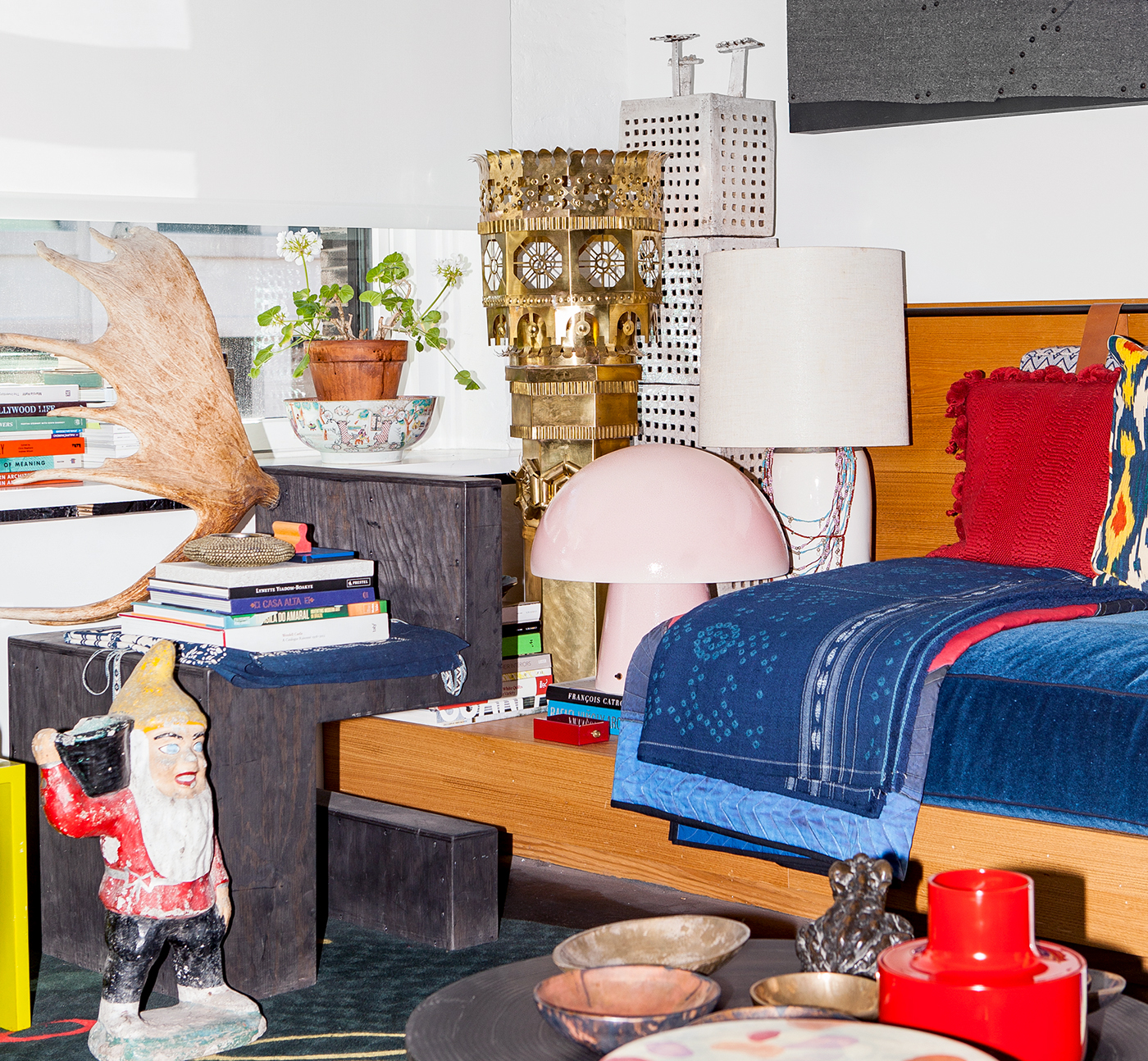
08.06.18
At Home With
Design Miami’s Rodman Primack Gives Us a Tour of His Collection-Filled Home
There is nothing understated about the two-bedroom apartment Design Miami’s chief creative officer Rodman Primack shares with his partner, Rudy Weissenberg. The bathrooms are covered from floor to ceiling in Max Lamb’s Marmoreal terrazzo; in the bedroom, a dark blue fabric of Primack’s own design covers the walls, envelops the headboard, and hangs from the windows as sheer-paneled curtains. In the living room, seven thin steel shelves bear the weight of hundreds of books; a Jonathan Muecke dining table surrounded by mismatched chairs is almost unrecognizable beneath stacks of even more reading material. Even Primack’s Dokter & Misses dresser is hand-painted with a busy graphic inspired by the Kassena people of West Africa. The apartment contains two garden gnomes. If you didn’t know a thing about Primack’s polytheastic tastes before visiting him in his New York home, you could guess them immediately upon entering the space.
Primack grew up in Laguna Beach, California, and Sun Valley, Idaho, but his worldview always exploded far beyond those regions. His grandparents were constantly traveling, and Primack soon followed suit — to Mexico as a child, to Japan as a teen, and now, flitting between homes in Miami, Guatemala, and New York even as he’s constantly touching down in places like Paris and Gstaad for business and pleasure. Visiting that many distant locales — often in the service of Primack’s other career as an interior designer — it would seem a waste if certain treasures didn’t frequently make it back in his suitcase. For Primack, however, collecting is both an obsession and a compulsion. “There are people who are equally aesthetic and equally interested in art and design but who don’t feel any need to actually physically have the item with them,” Primack says ruefully. “Clearly, both Rudy and I feel a need to have objects, which is a different thing — to be able to touch them, look at them, hold them, and actually use them.”
When we heard IKEA was releasing SAMMANHANG, a new collection of furniture and display pieces aimed squarely at those for whom collecting is an obsession, we immediately thought of Primack. Rather than squirrel away his accumulated possessions in some hidden storage space, Primack chooses to live with and share the things he collects in his everyday life. Read on for a look inside Primack’s West Village home — and a glimpse at the objects that give his home and his life an added layer of meaning — then click here to watch a video created by IKEA to celebrate the art of autobiographical collecting.
PHOTOS BY SEAN SANTIAGO
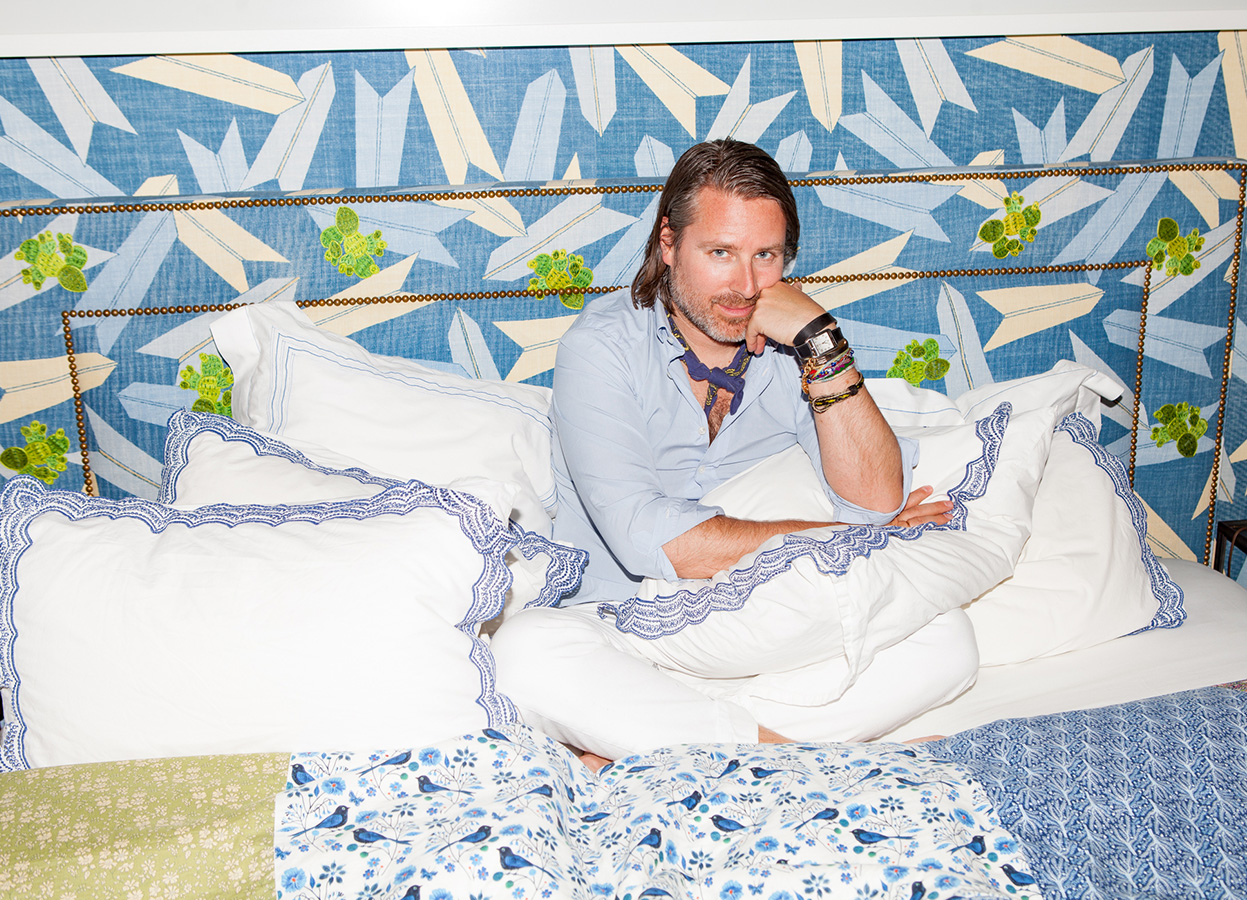
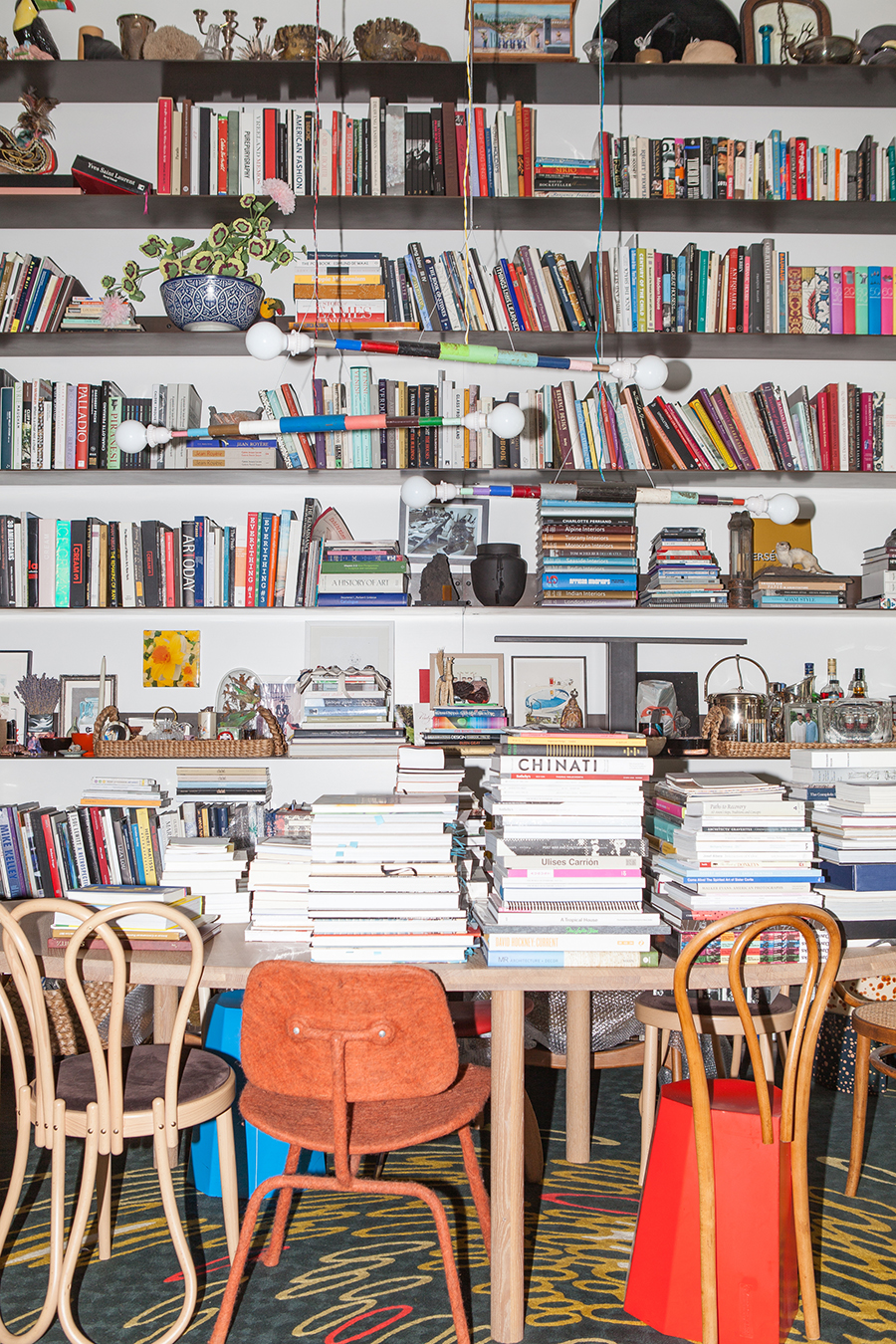 On merging his collecting style with that of his partner, Rudy, and finding the space to fit it all:
On merging his collecting style with that of his partner, Rudy, and finding the space to fit it all:
“Our New York apartment is such a combination of our interests in terms of things that we like to buy together or that we’ve gotten each other interested in. The apartment exists as a structure in which to hold all the different things that we want to live with. We end up having other houses almost as a way to keep more stuff.
“When I was a lot younger, I remember speaking to a friend about collecting art and he said to me, ‘You’re not a collector until you have storage.’ And I think that’s true in the sense that when you’re no longer trying to create a look… Neither of us has ever bought something for the look of it. It’s more for the themness of the object. It’s very infrequent that we’ll buy something and be like, ‘Oh, that’ll look so pretty in that room.’ It’s more like we’ll make it work in a room because we want to live with it. But the reality is that right now we’re going to have to either get storage or find a little house outside the city. There’s too much stuff in here. It’s starting to drive us crazy.
“We’re both the kind of people who are driven, unfortunately, not just to appreciate something but to appreciate it and then want it. There are people who are equally aesthetic and equally interested in art and design but who don’t feel any need to actually physically have the item with them. Clearly, both Rudy and I feel a need to have objects, which is a different thing — to be able to touch them, and look at them, and hold them, and actually use them. There are antique linens that we don’t end up using — laundering and pressing them is a whole thing. But in general I’m fairly easy about things getting scratched or marked on. For the most part, they can be fixed. To my eye, things that look worn or aged are prettier than things that look perfect and shiny and new anyway.”
When I was younger, I remember speaking to a friend about collecting art and he said to me, ‘You’re not a collector until you have storage.’ And I think that’s true.
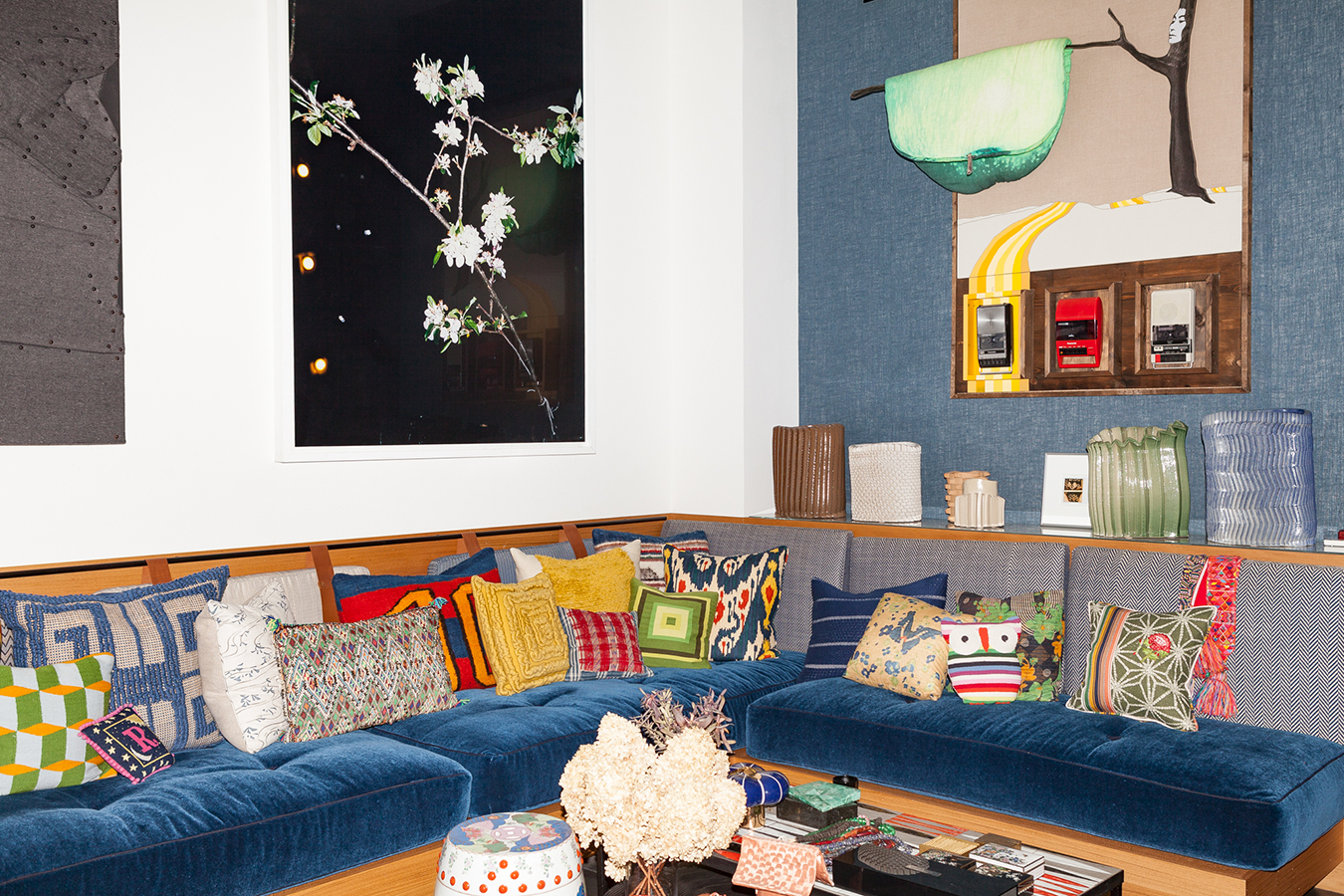
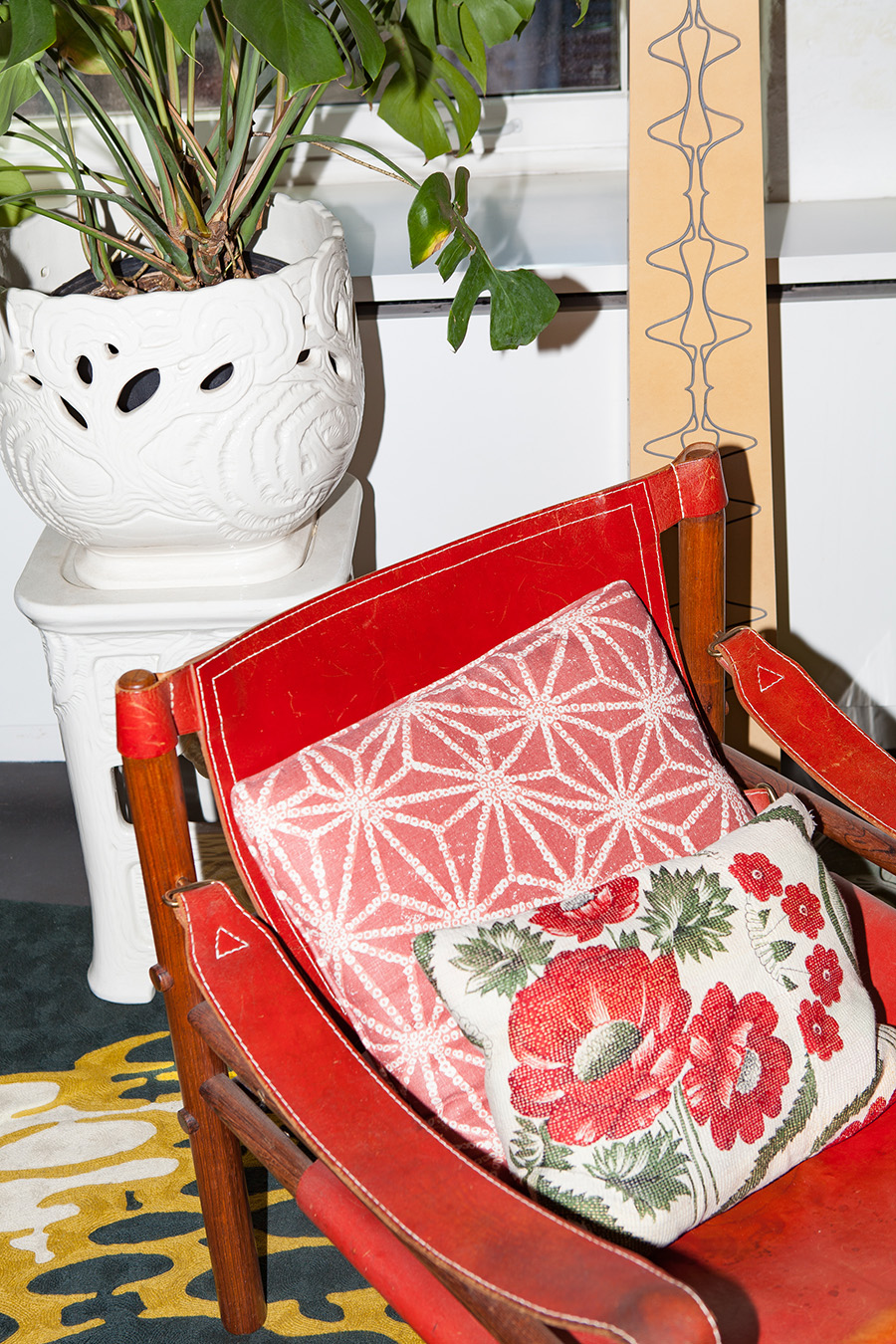
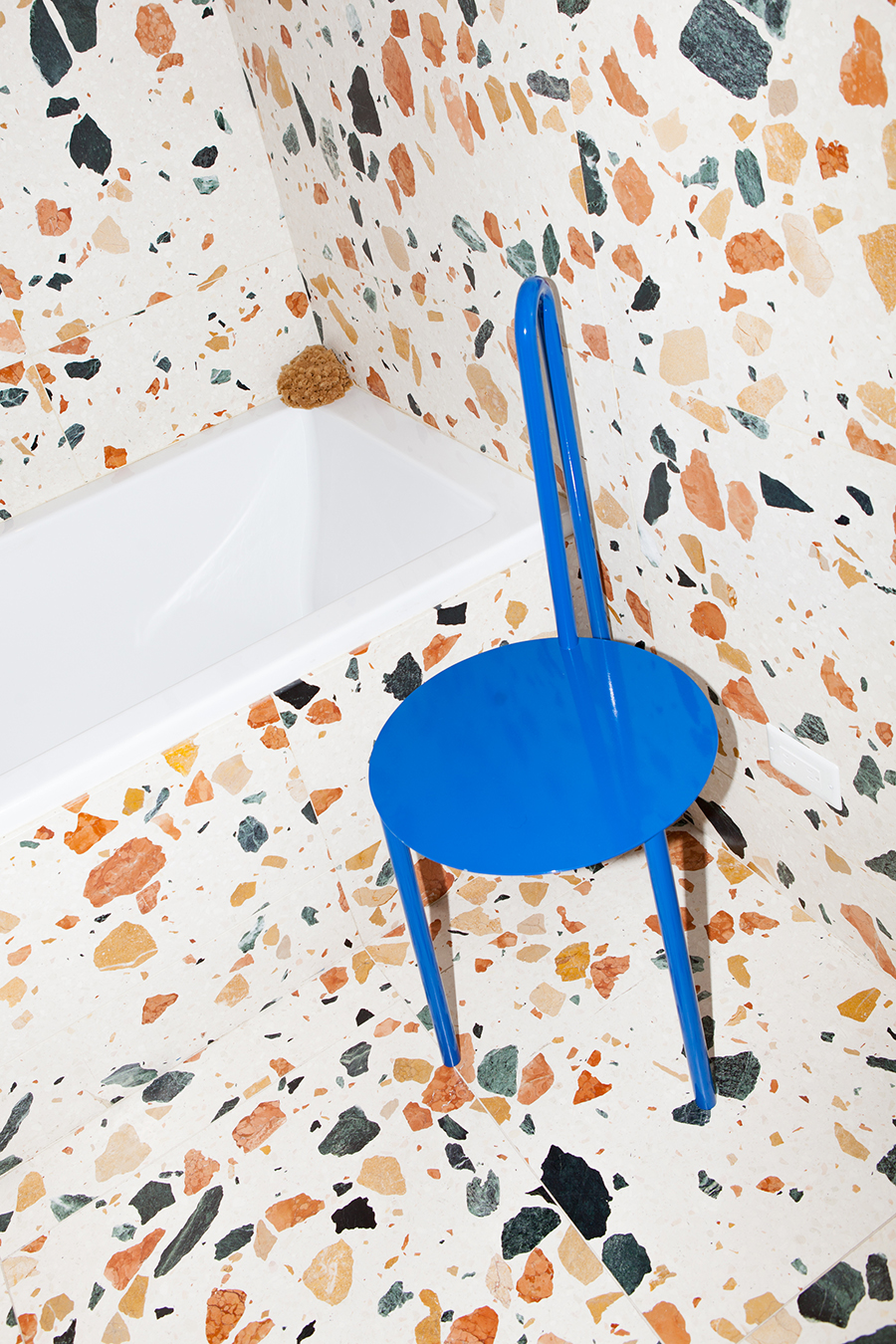
On life before Design/Miami:
“I’ve had RP Miller, my interior design practice, since 2002 or so, and that has always existed alongside other jobs. Before Design/Miami, I was a chairman at Phillips — the auction house that has probably been the most influential in terms of the development of collectible design. I worked closely with the design department in developing the design market there. I came to Phillips from Gagosian, before that I worked at Christie’s, and before that, Peter Marino. So I have always gone back and forth between art and design in a very practical way.
“Rudy and I have been together for 20-plus years, and for most of that period, he was producing Spanish-language soap operas. Now we live in one because we live in Guatemala and literally live in a soap opera, which I call Bitter Sugar — Azucar Amargo (laughs). Rudy’s family is in the sugar business, and we had to move to Guatemala six years ago because they were having a family crisis, and so he stopped working in Spanish-language media to deal with it. I don’t believe he’s going to go back to making television. He’s currently working on a building with Tatiana Bilbao, the Mexican architect, in Guatemala. He’s just graduated from the Harvard Graduate School of Design, from a post-post grad program there. And we’ve also done projects together. He and I were partners for many years with Jeanne Greenberg at Salon 94. We worked with Rick Owens to develop his furniture practice, we worked with Kueng Caputo — sort of doing what Paul Johnson is doing now in a much more focused way.”
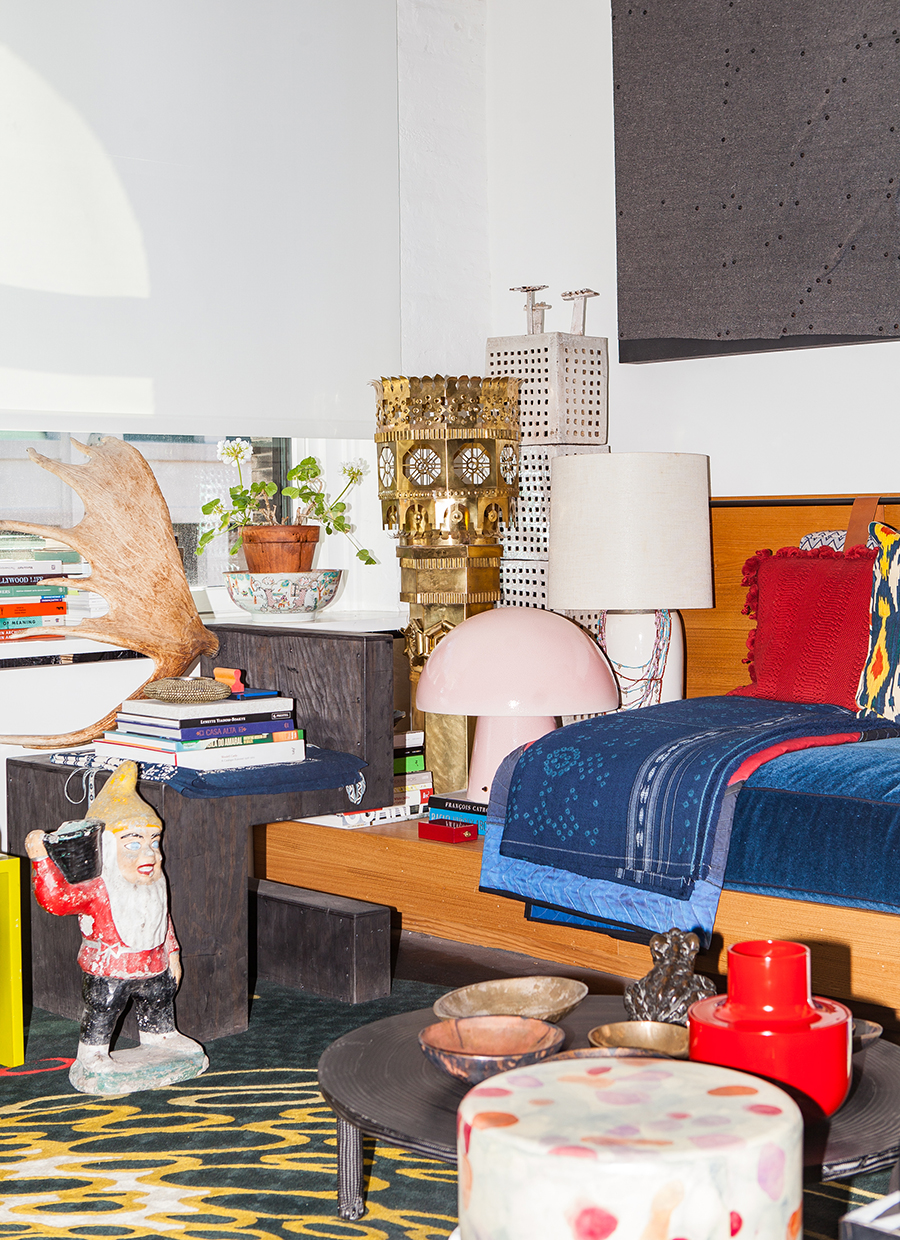
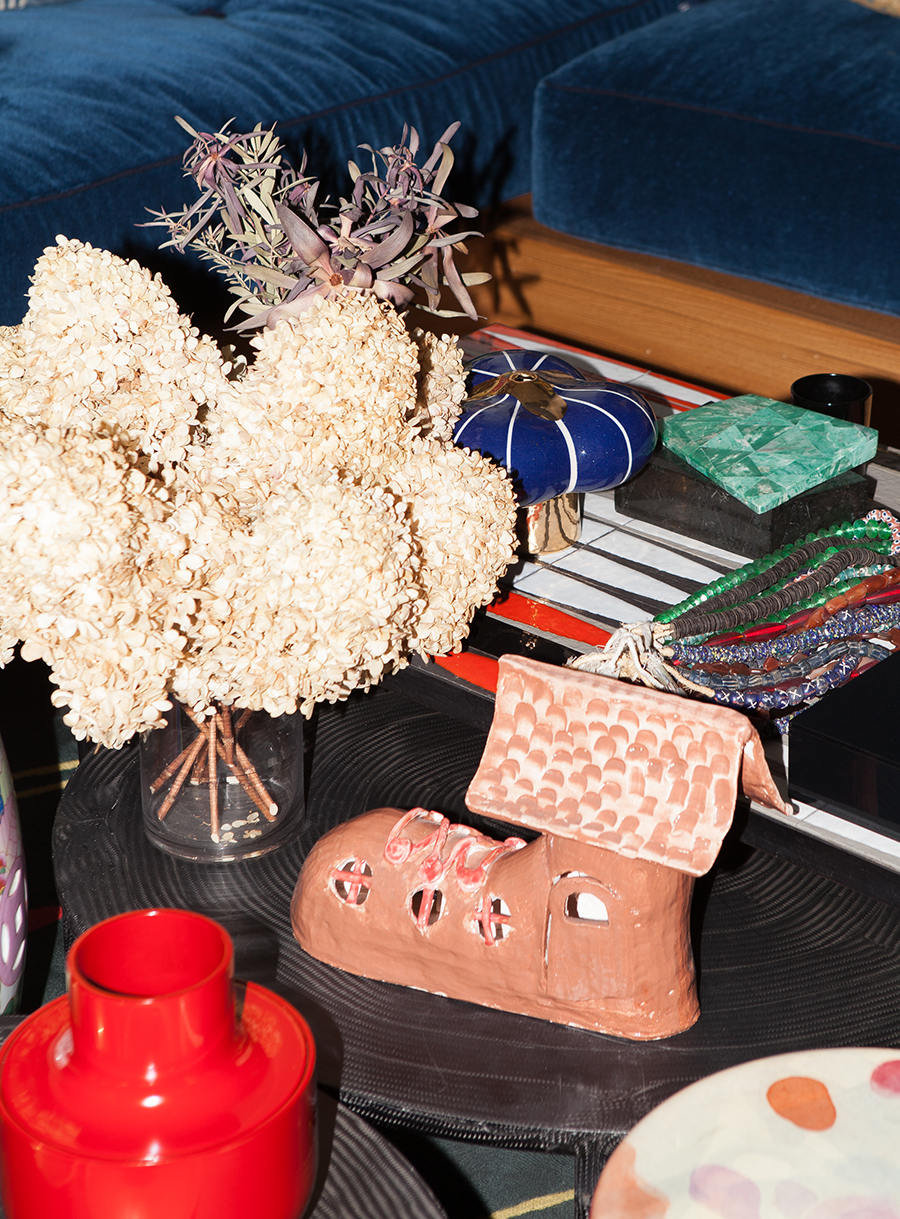
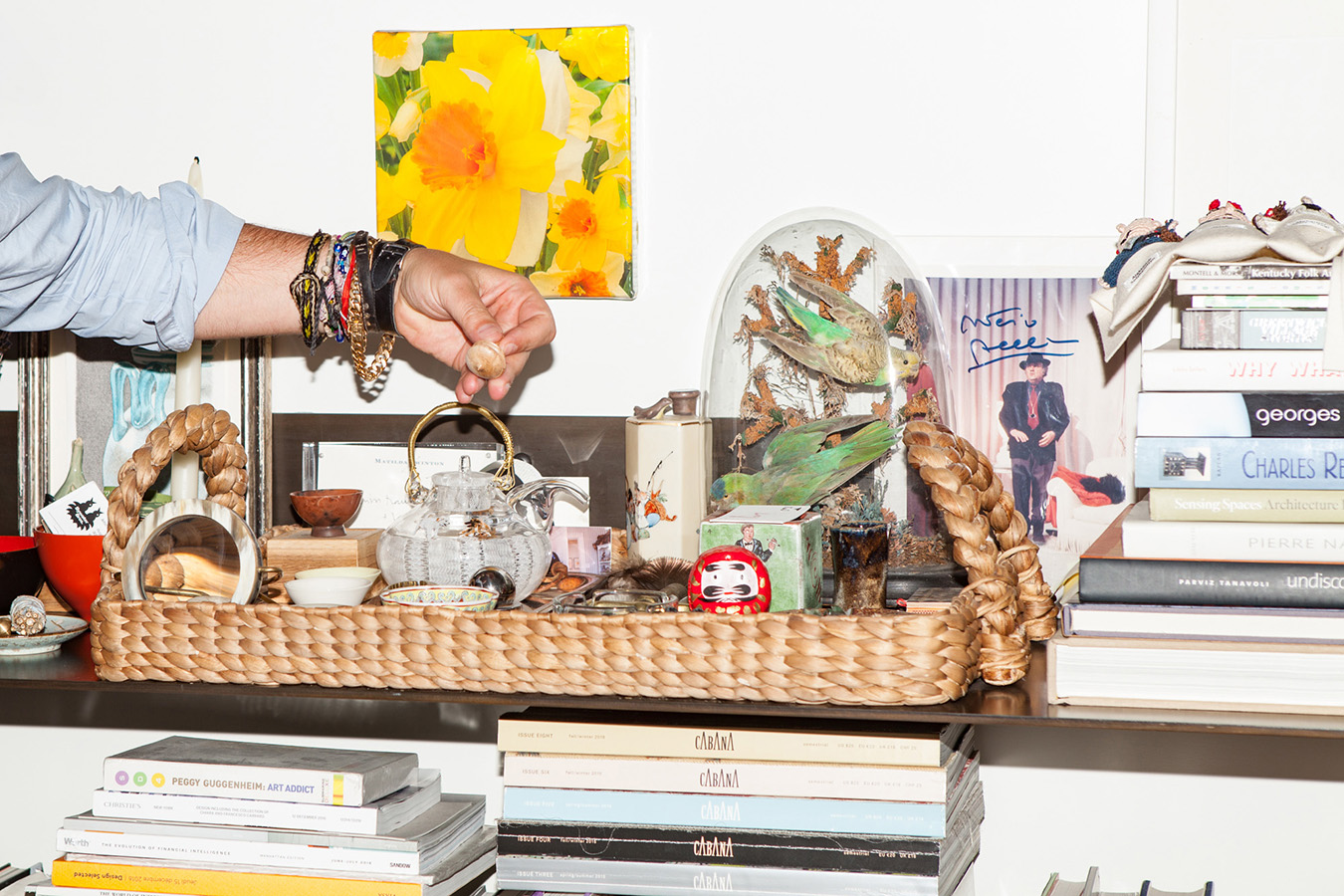
On the first thing he had an urge to collect:
“The first thing I really focused on and thought about how to display was Mexican Day of the Dead figurines. There’s this whole tradition from Oaxaca of presenting dead people having a good time, playing musical instruments, going out to dinner. They’re usually made from paper, wood, and clay. My family went to Mexico quite a bit when I was a kid; my grandparents had a place there. But when I was 12 or 13 I went crazy one Easter in Puerto Vallarta and spent all of my Easter money buying these figurines. I had to redesign my room to accommodate them. My mother allowed me to get a carpenter to make little wood shelves that we designed together. A lot of it broke, of course, but I took some of it to college. It’s just gotten smaller and smaller over the years.
“The next thing was paper. When I was 14 I went to Japan. My obsession with paper had started a bit earlier; I had been making paper using dried wildflowers. But then I went to Japan and I bought tons of paper, which I still have and still use. There’s a watercolor beside my bed that I did for my grandmother when I was 15 or something and it’s mounted on a piece of the Japanese paper that I brought back.”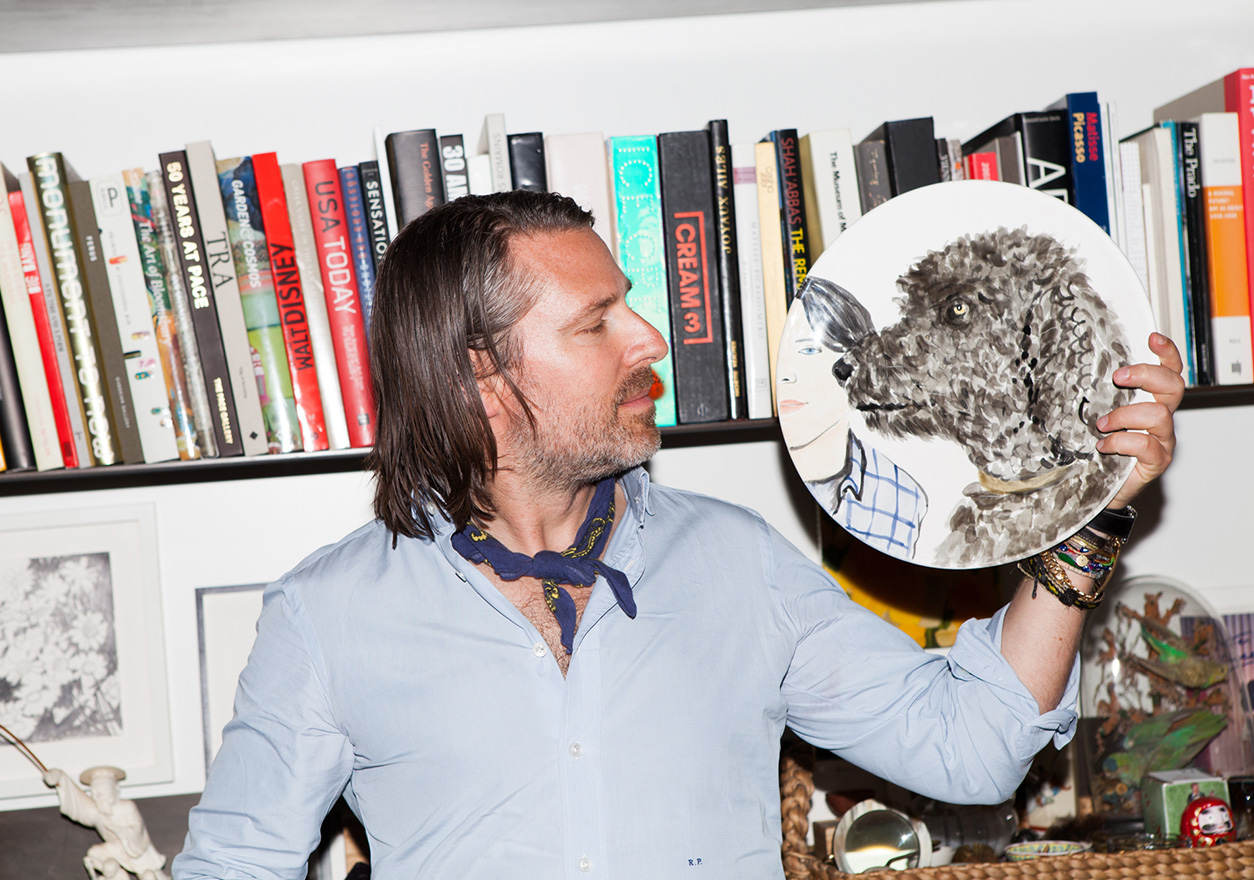
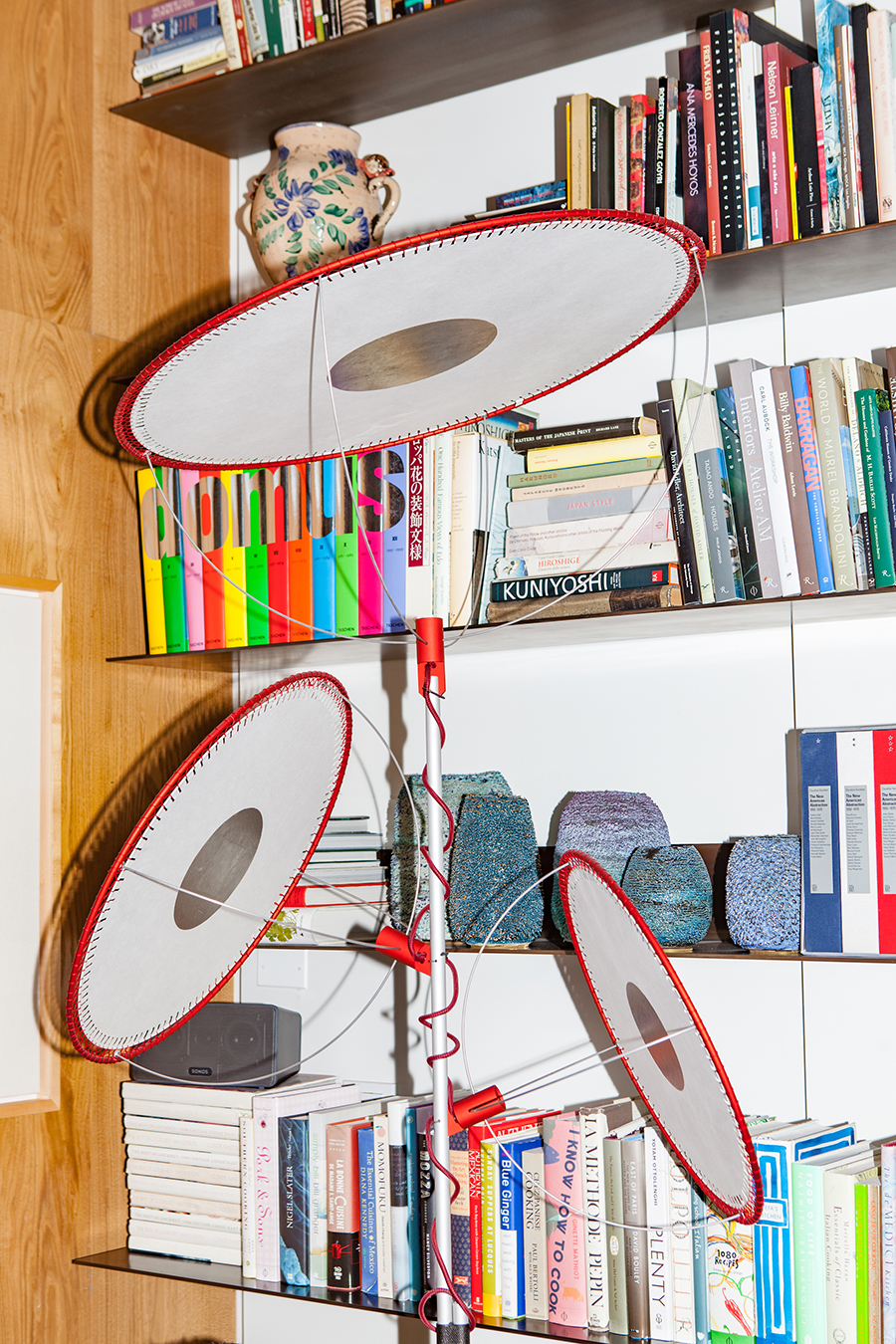 On growing up around stuff:
On growing up around stuff:
“My mother was a great gardener, and really into food. I grew up in a little town in Idaho, and she would go through periods where she was really into a particular cuisine and she would have to send away for spices from New York. And then my grandparents, who I spent tons of time with — they would never call themselves “collectors” but they were always collecting Japanese things. They built three Japanese houses in California over the course of 30 years. I grew up in the last of those houses, which was finished in 1971. My grandparents built it in collaboration with Carl Matson, who was one of the Case Study architects, and the memory of that house is the most important thing from my childhood. The huge steel windows, the redwood timbers — all hanging over a cliff looking over at Catalina Island.
“My grandmother was kind of minimalist in her tastes — not in a blank white canvas way but in a Japanese way. There were these long surfaces, and she would have one or two objects on them. But there were cabinets and closets in that house that held miracles — collections she’d inherited from her mother, china and silver and glasses and linens and stuff like that. But she wasn’t precious about any of those things. If it was pretty and cool, she liked it.”
On where he does most of his collecting:
“We are always looking at things when we are traveling. I’m not a good flea marketer; Rudy’s better about doing that. I know people who go every week to the flea markets looking for something, but we don’t do that. We’ll buy from galleries, we’ll buy from auction houses, we’ll buy from websites.”
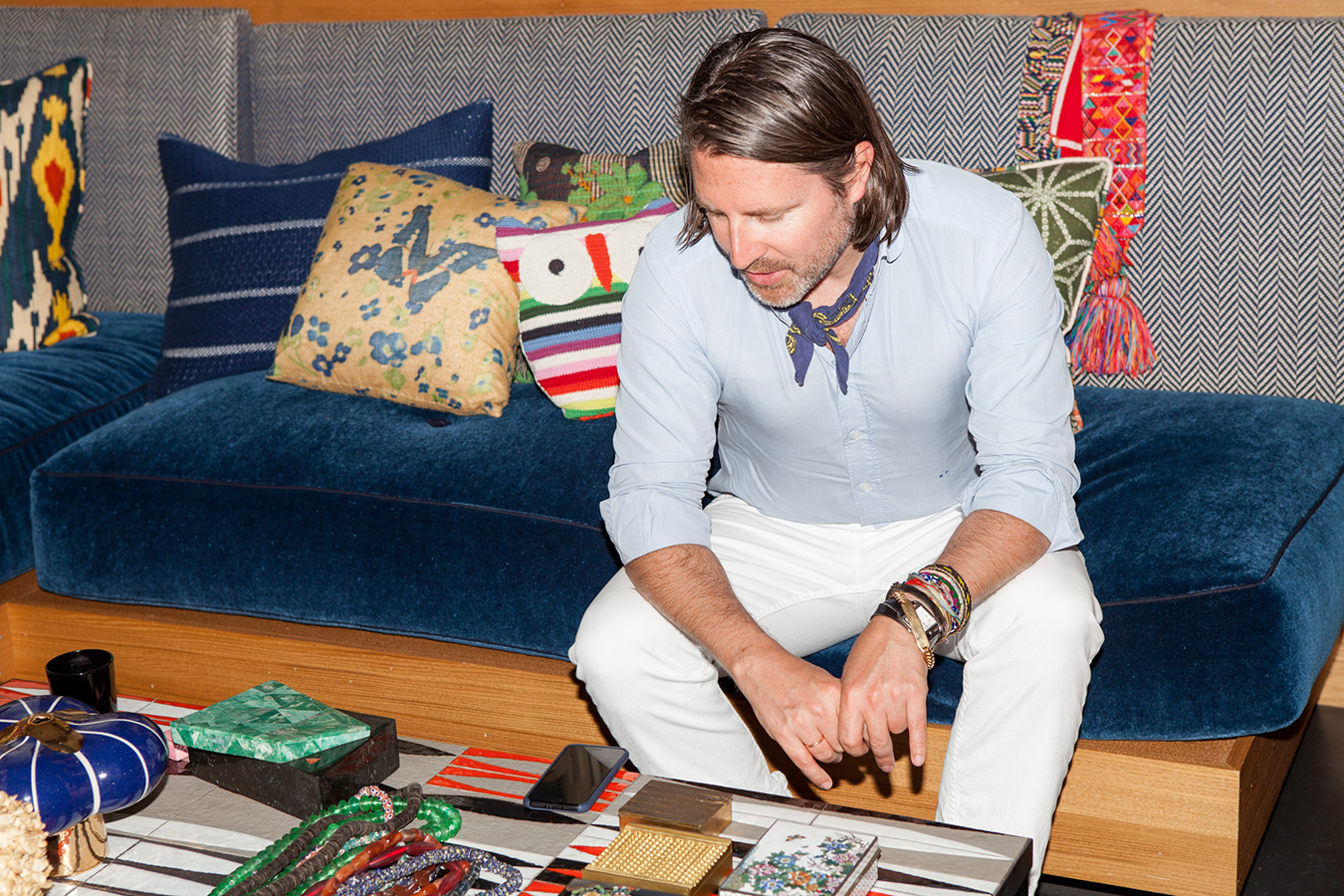
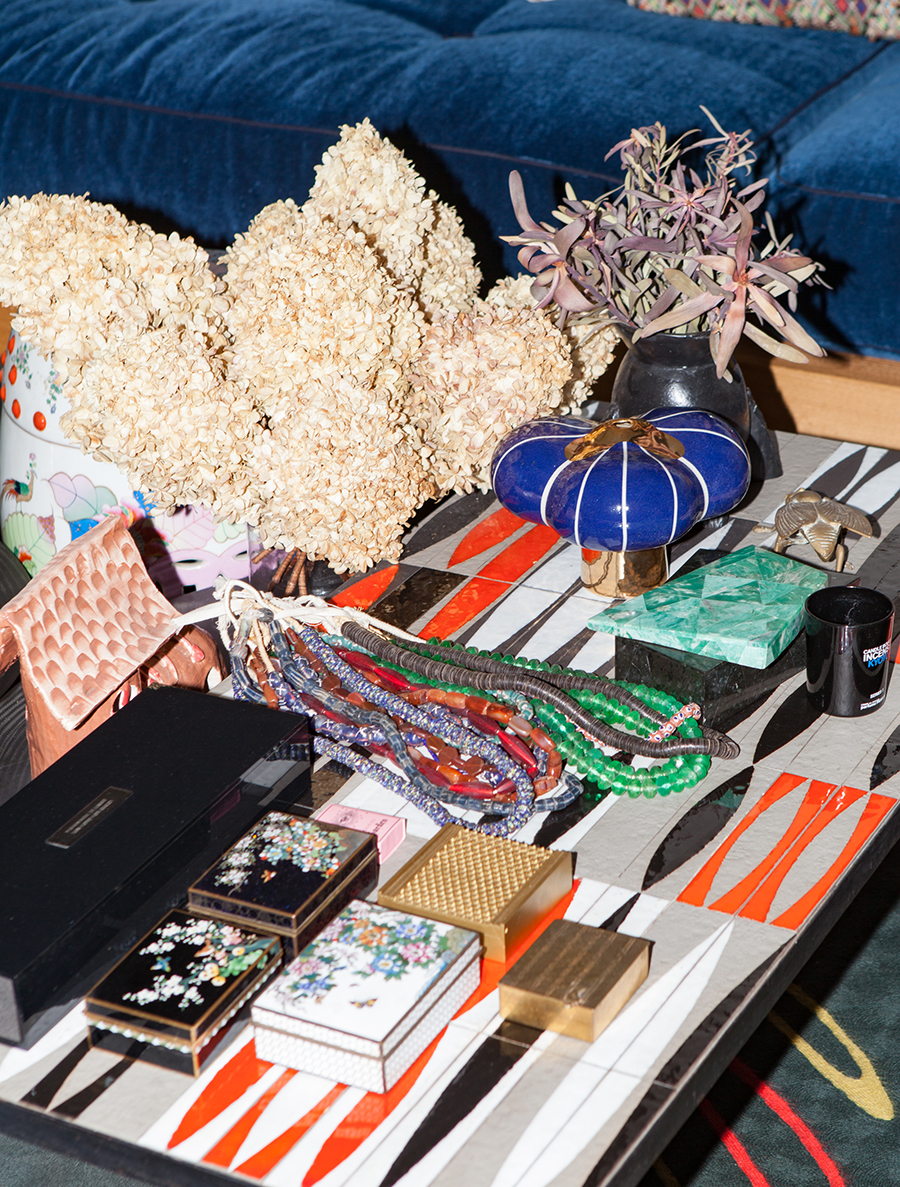
On his collection of boxes:
“The marbled geometric one I think we got from Patrick Parrish. It’s a 1950s Italian thing, but we don’t know who the designer was. Peter Marino gave me one as a gift for my birthday this year. The Line Vautrin one came from Christie’s and Rudy gave it to me one year for my birthday. The cloisonné ones were all from my grandmother. There’s a bunch of wooden ones that we got from Morocco in Miami, and there are a bunch of leather ones in Guatemala from Rudy’s grandparents. Rudy and I are both very nostalgic and connect with those things from our grandparents in a way that our siblings don’t. For me, everything has a story or a connection.”
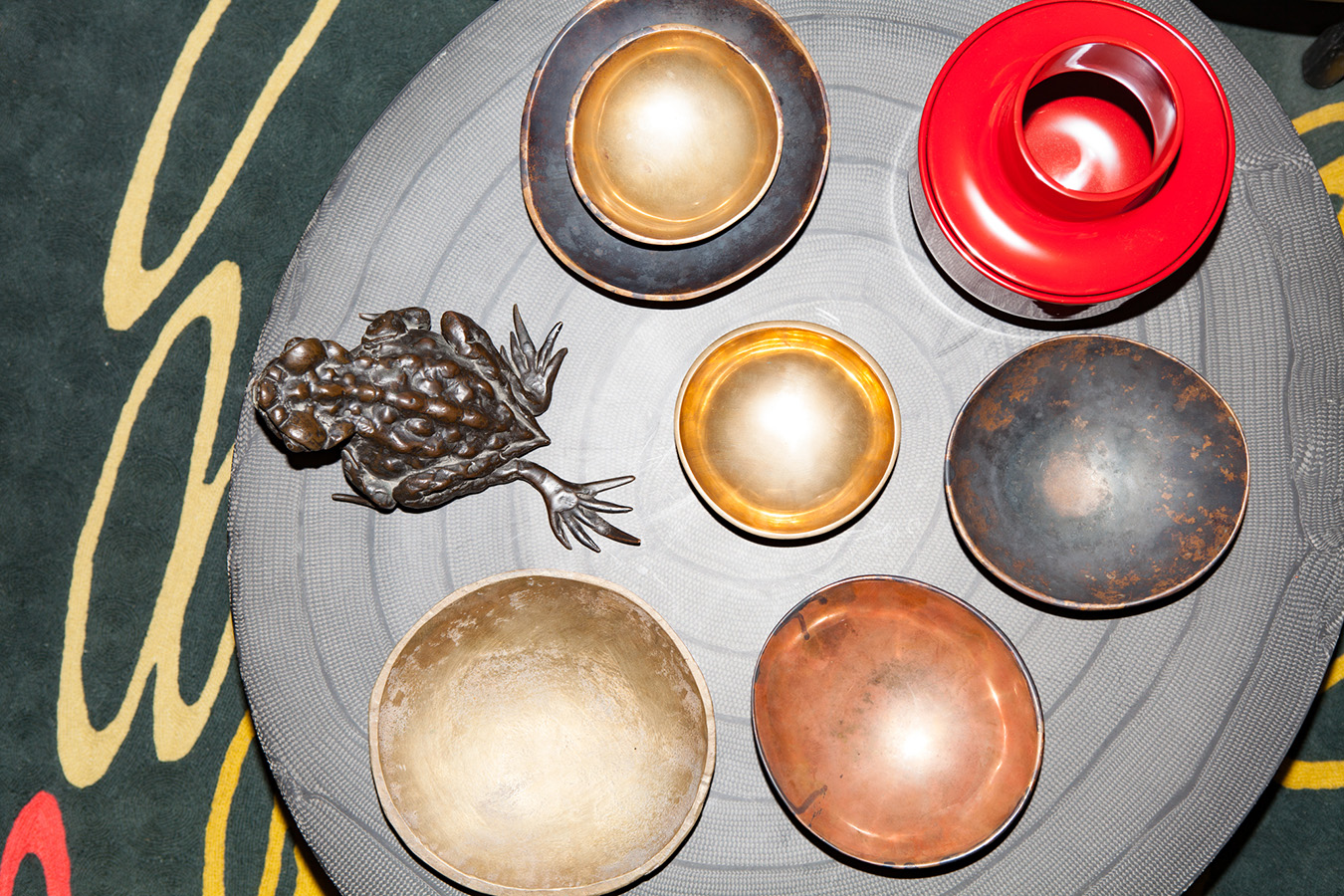
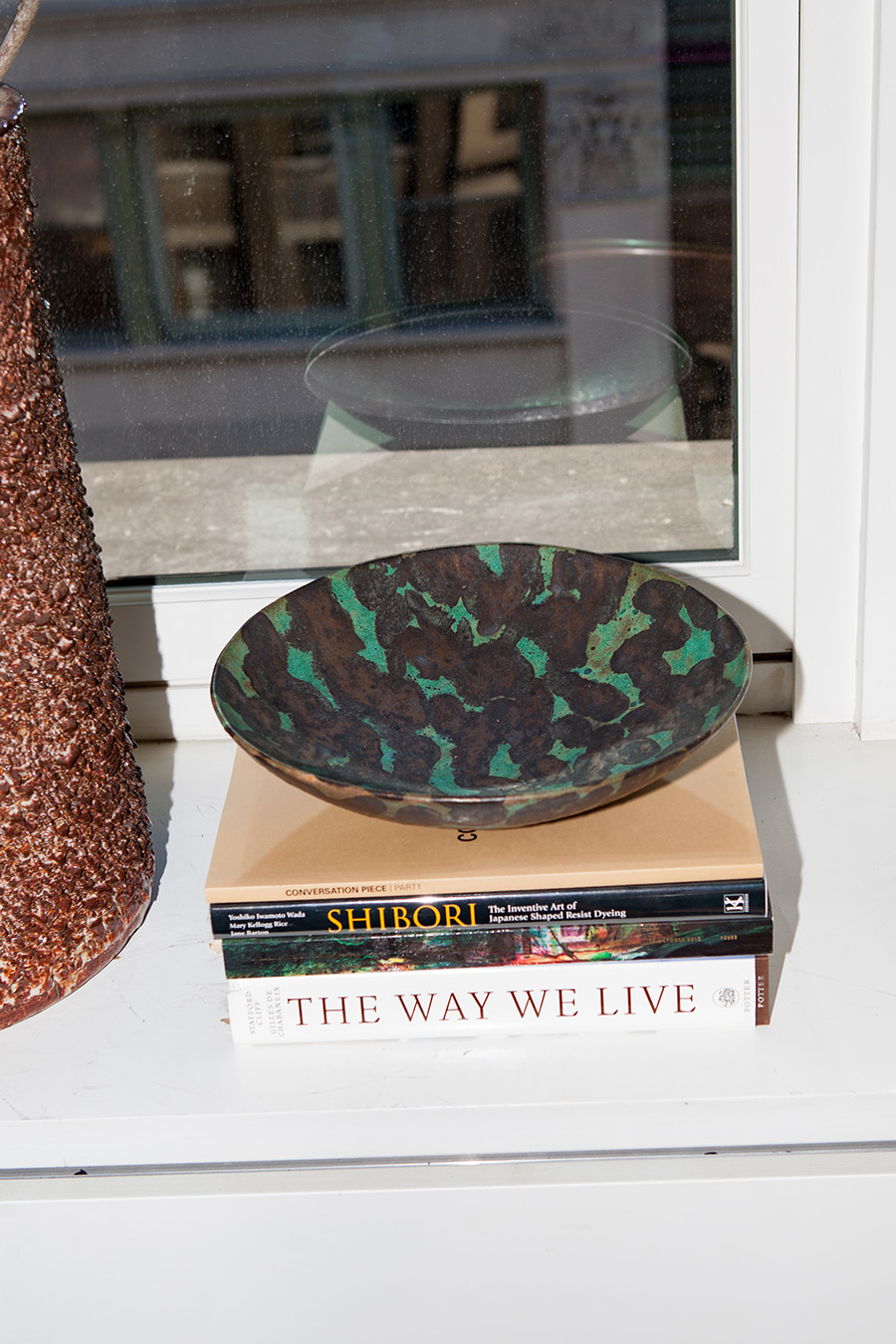
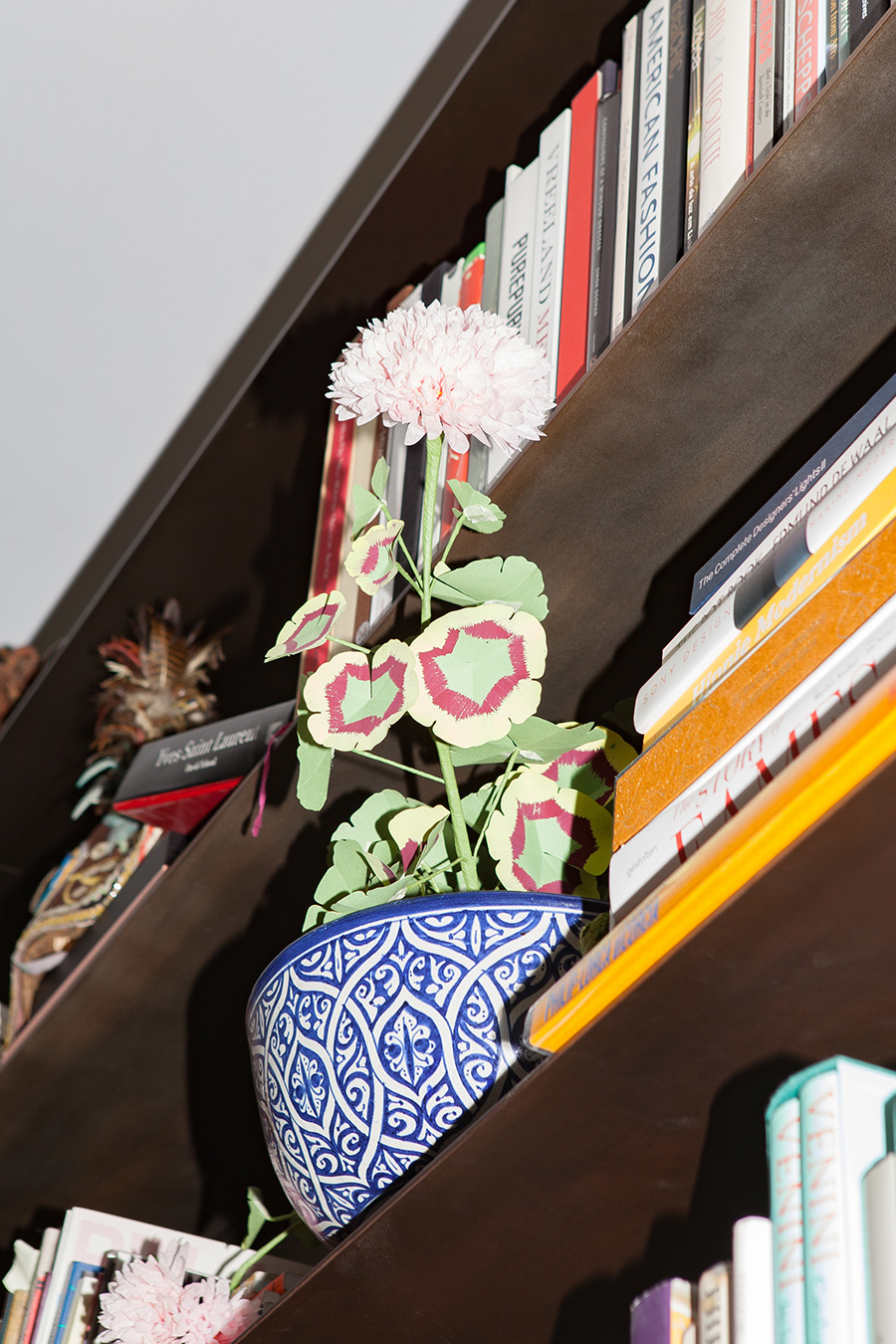
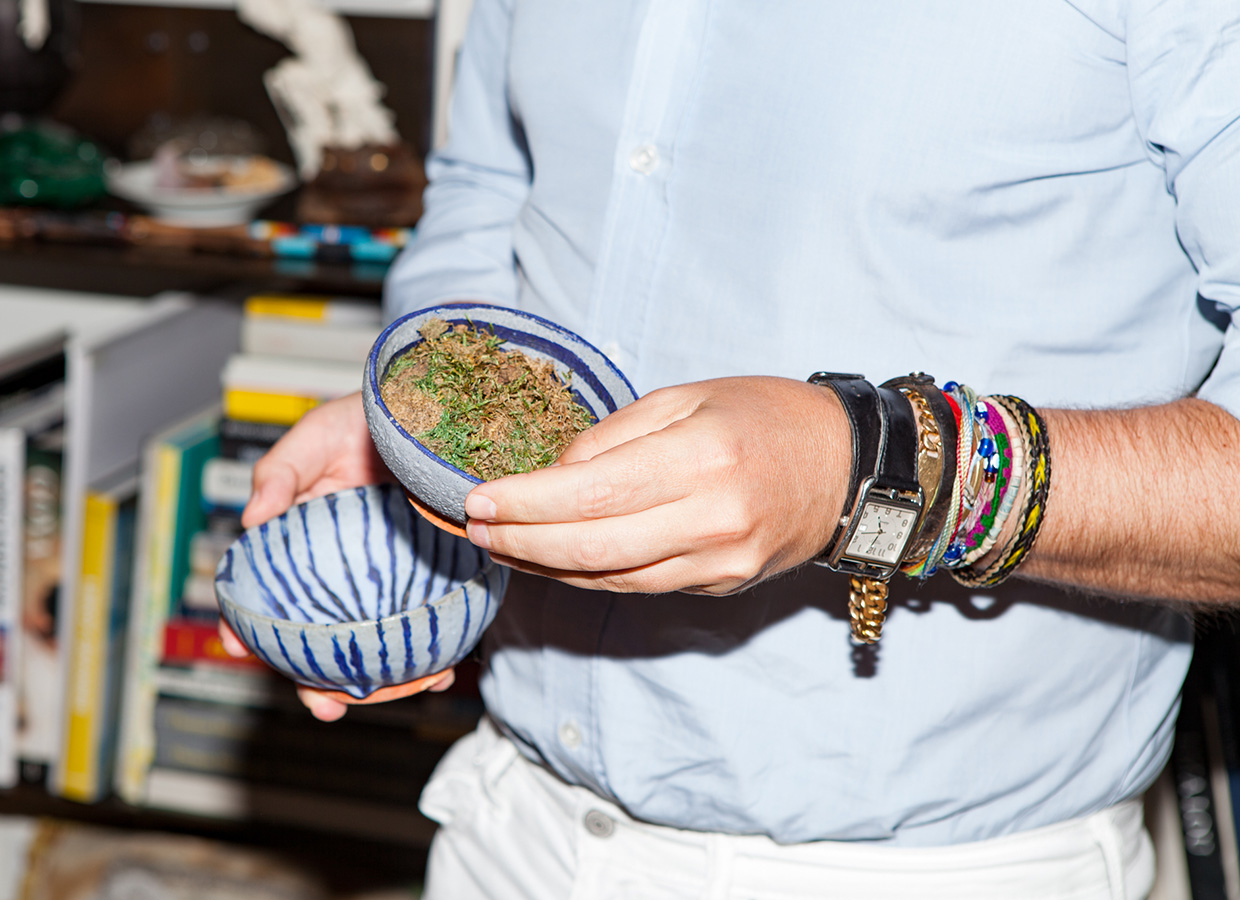
On the significance of bowls:
“The bowls also started with my grandmother. When we were growing up, my grandmother always had three little bowls out, it was a very Japanese thing. So my sister and I started gifting each other bowls when we were teenagers. There’s a bowl from an artist named Anita de Castro. She would come to Sun Valley in the ‘80s, and my mother, my sister and I would all buy them. It’s like an obsession. I just bought bowls in Paris last week. They’re everywhere, and they often hold other things I collect, like matchbooks. My grandparents traveled constantly and they had a matchbook collection, which we loved as kids. They had this huge bowl filled with them. We’d stick our hands in and pull one out and it would be, like, Gstaad or St. Moritz or Hong Kong or Taipei.
“The bowls with the illustrations are by a Greek artist in LA named Konstantin Kakanias. Rudy commissioned them. This is moss from Canada, where my family spends the summer. It’s a compulsion. I need another bowl like I need 12 more pounds.”
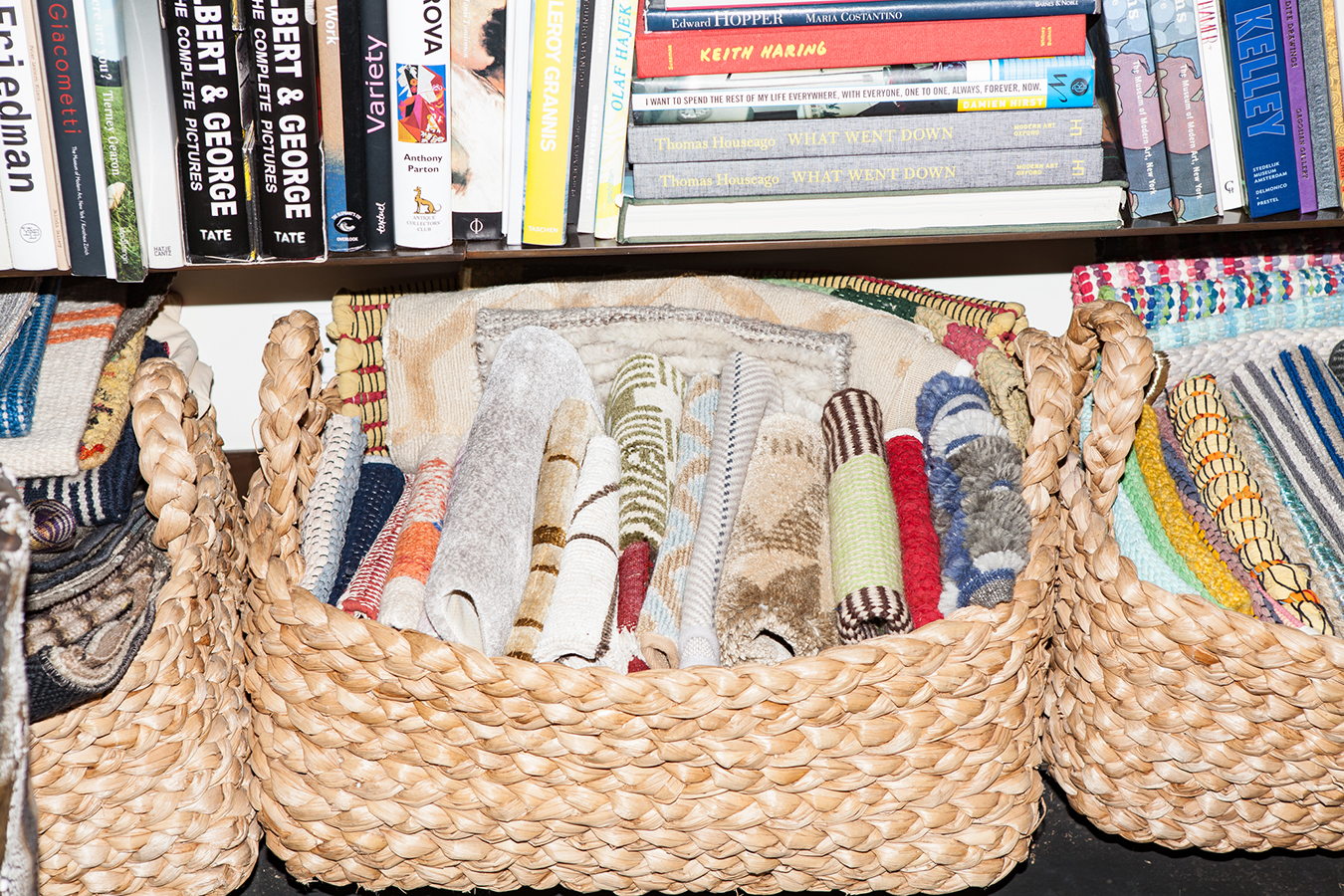
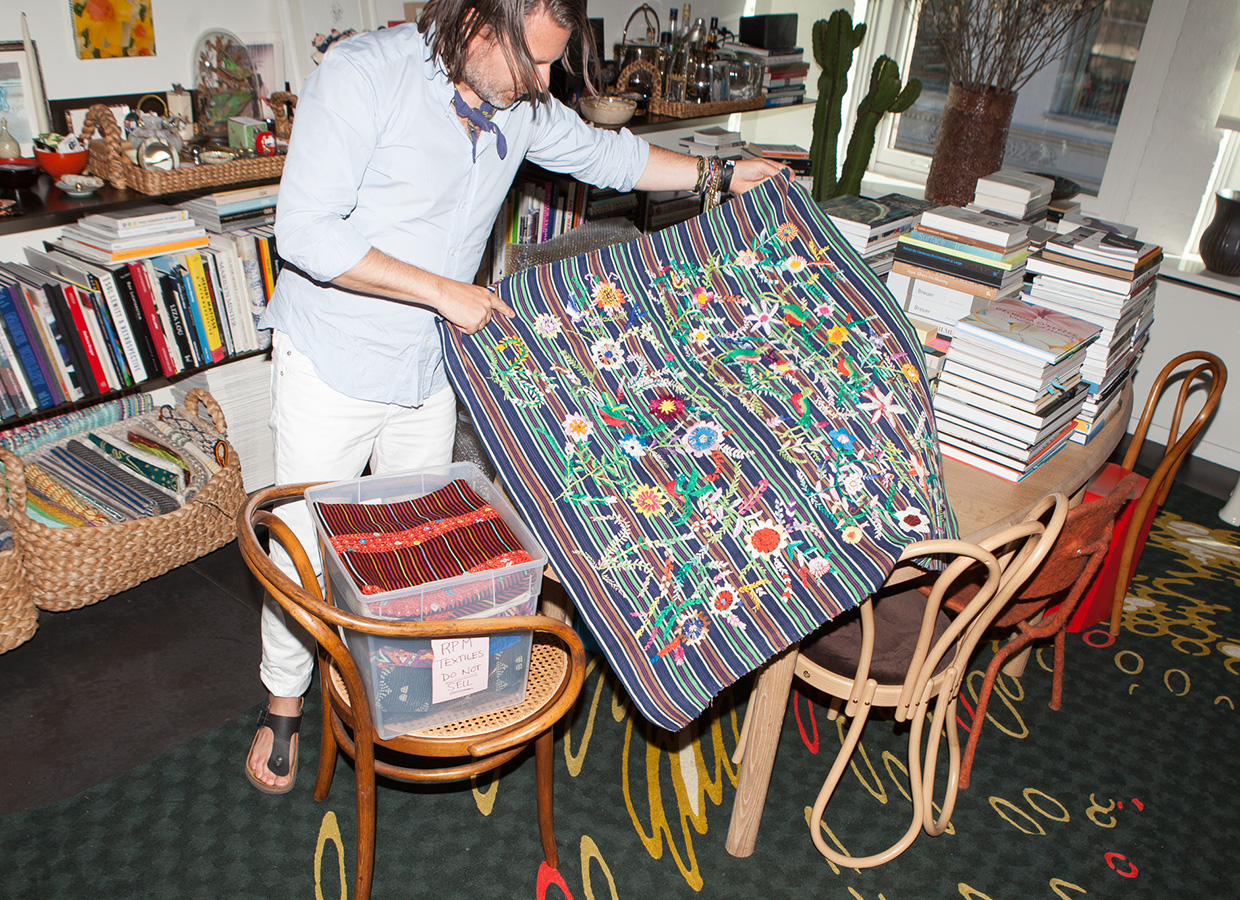
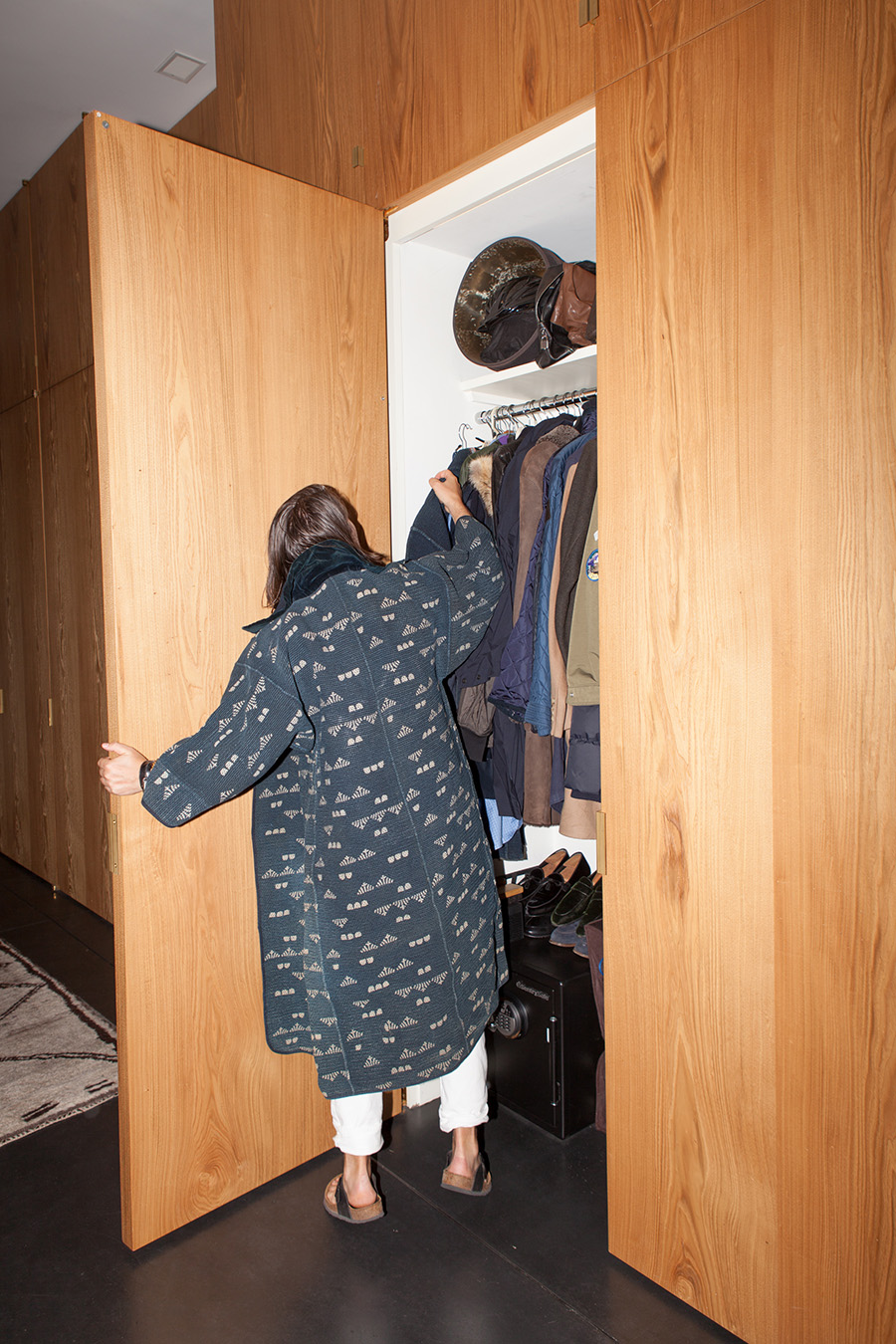
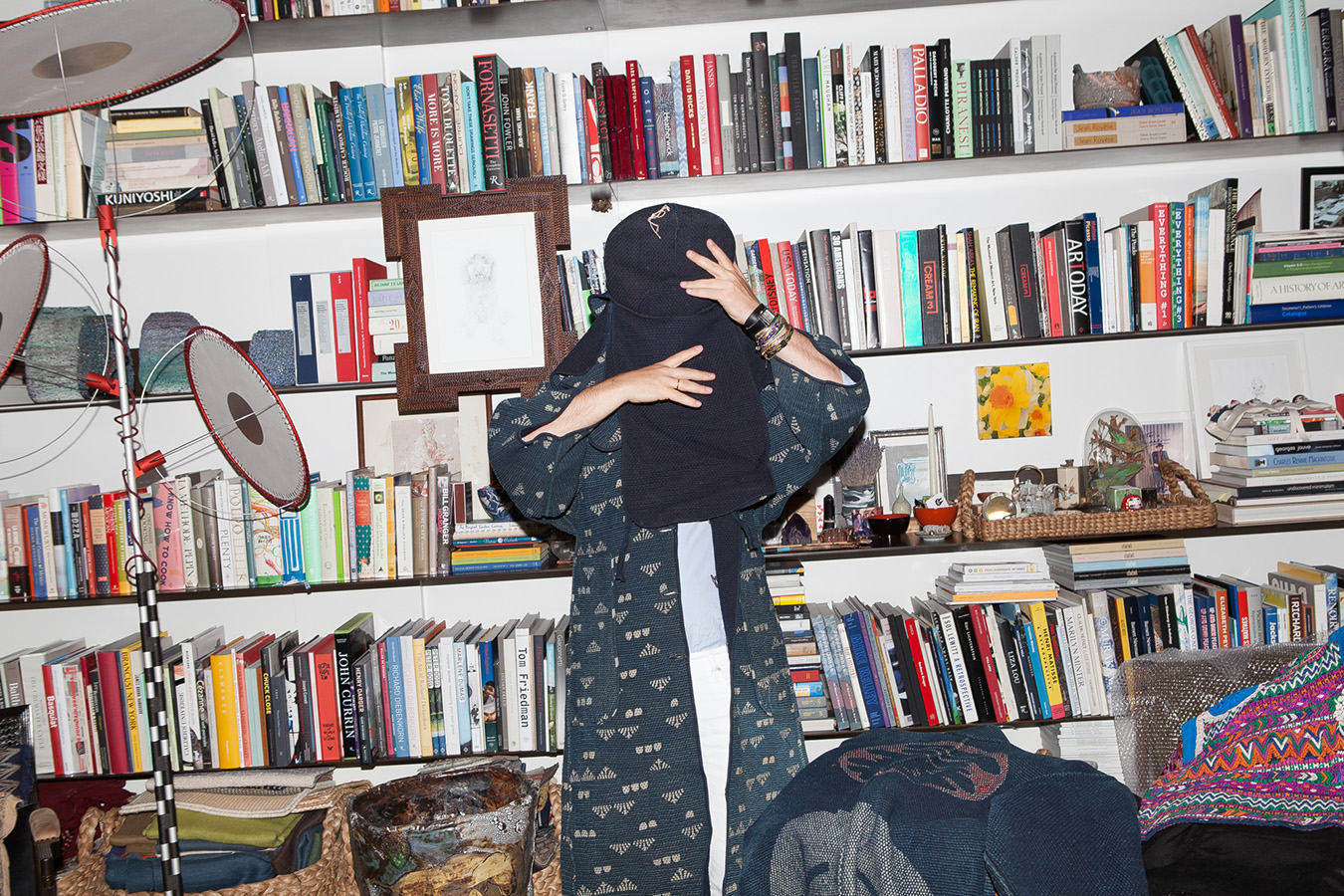
On his boxes and boxes of textiles:
“The cool thing about Guatemala is that different towns have different ways of making textiles and embroidery. This is a huipil, the traditional garment a woman would wear. You would know where a person was from based on their embroidery pattern.
“This (above) is a traditional Japanese fireman’s uniform from the 19th century. It’s so beautiful but it would be to protect. Then there’s a hat, and another robe on top of it.
“Part of the thing with the textiles is that I also design textiles. So a lot of what ends up in these boxes ends up getting rethought into textiles that we produce as RP Miller. A lot of them are based on documents and kimonos, or different things that we found. Like this one that we’re working on right now, we got in Kyoto a couple of years ago. We’re taking one detail and we’ll figure out a fabric or something to do with it. Most of the textiles that we make are fundamentally based on details from Japanese woodblock prints that we then abstract.”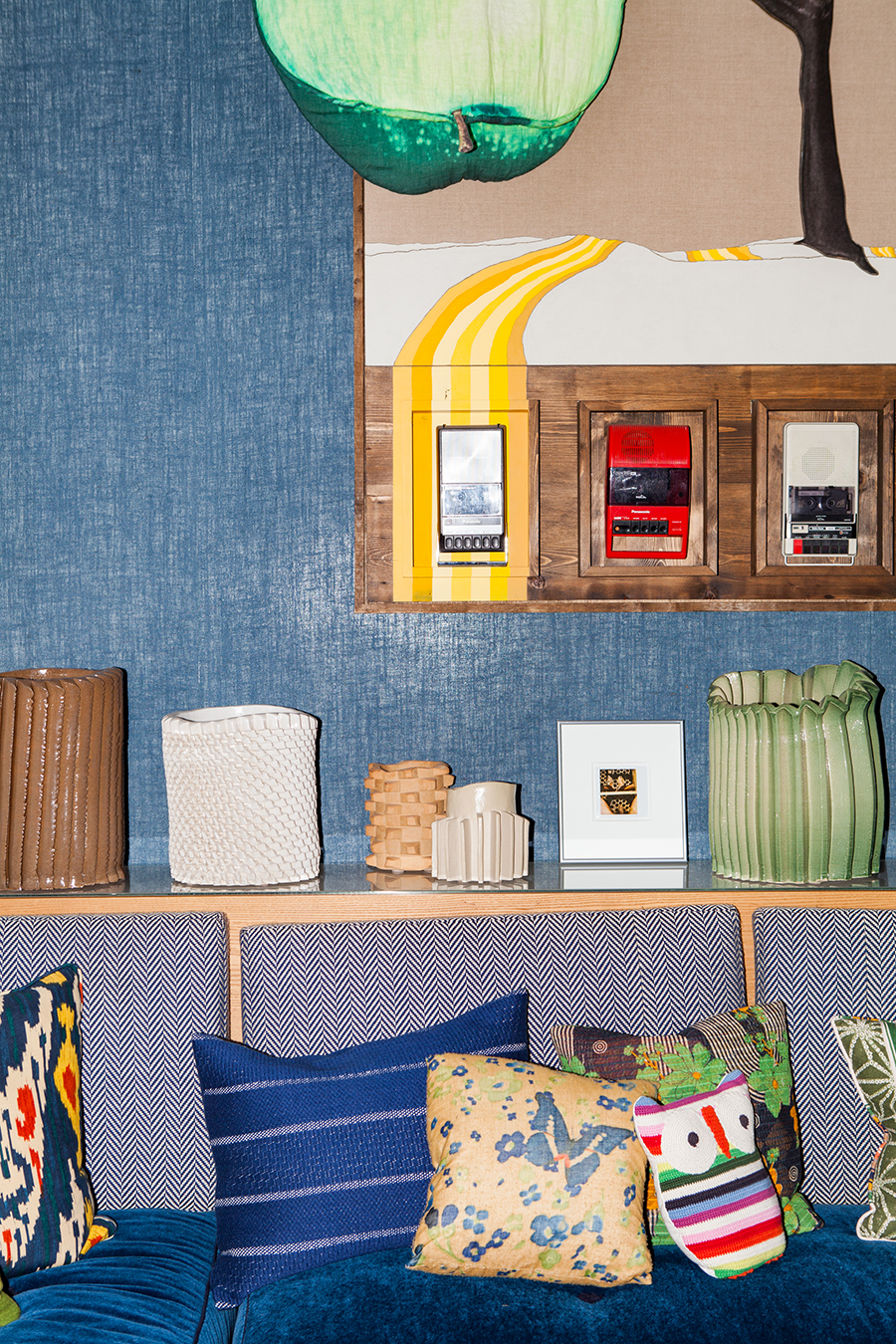
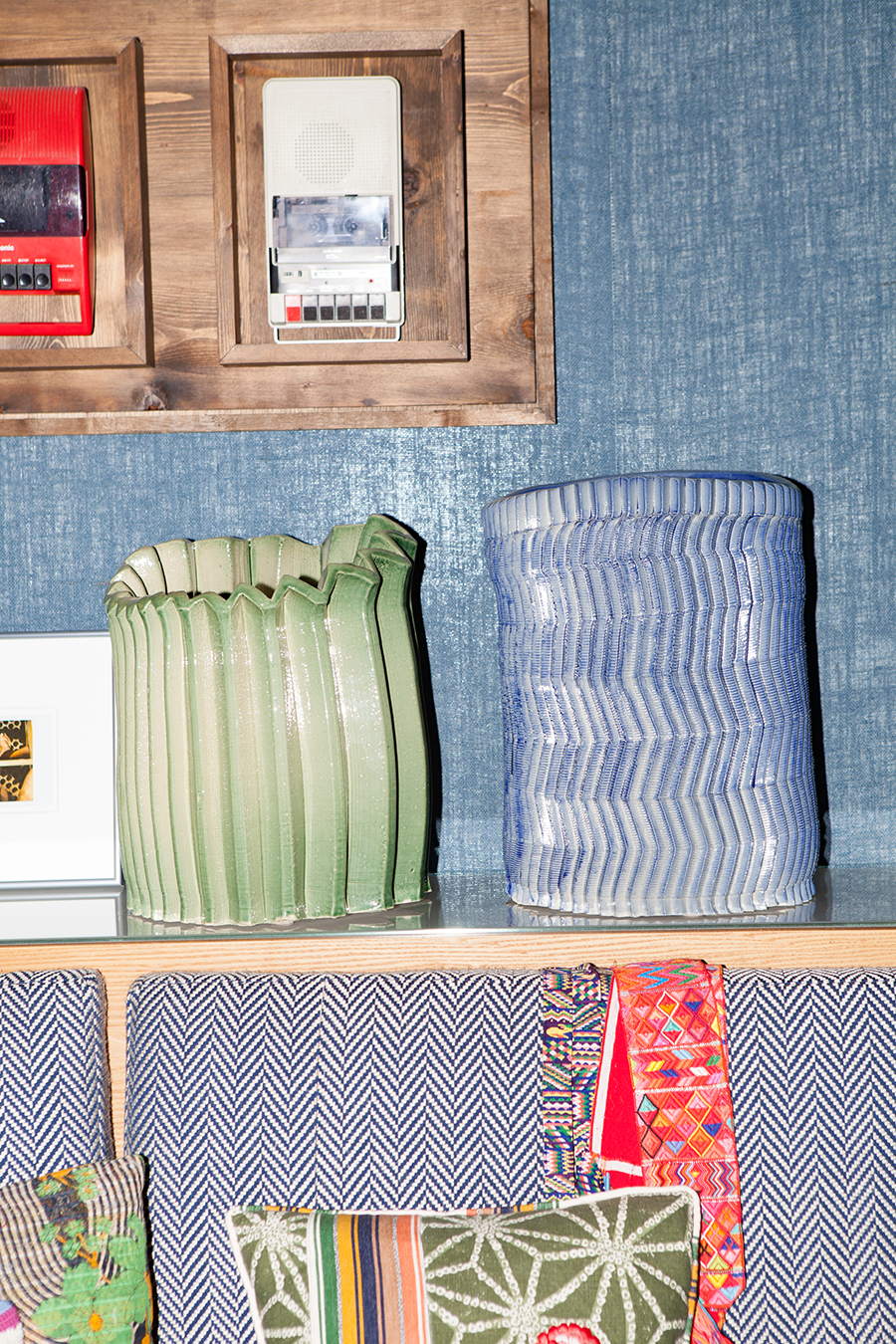
On his collection of ceramics, which spans from the Haas Brothers, to Floris Wubbens, to what he calls “Chinatown crap”:
“They’re basically like another form of a bowl [laughs].”
Primack happens to be one of Sight Unseen’s favorite collectors, but to mark the launch of its SAMMANHANG series, IKEA filmed four other object-obsessed people in their homes. Check out this video of a Berlin couple who document their daily life by collecting quirky found objects like keys, bottles, and little plastic toys.
This post was sponsored by IKEA, but all thoughts and editorial content are our own. Like everything at Sight Unseen, our partner content is carefully curated to make sure it’s of the utmost relevance to our readers. Thank you for supporting the brands that support Sight Unseen.
